Get PeakVisor App
Sign In
Search by GPS coordinates
- Latitude
- ° ' ''
- Longitude
- ° ' ''
- Units of Length

Yes
Cancel
Share ×

Scan the QR code and open PeakVisor on your phone
❤ Wishlist ×
Choose
Delete
Aptly named, the Appalachian Ridges are a system of mountain ridges and peaks located in the eastern portion of the United States. The range extends from Alabama in the south to New York in the north and is home to 1,870 named mountains, the highest and most prominent of which is Spruce Knob (4,862ft/1,482m).

Also known as the Ridge-and-Valley Appalachians, the Appalachian Ridges are located in the eastern United States. They cover a wide swath that starts in the northern section of Alabama and crosses through northwestern Georgia, western Tennessee, western Virginia, eastern West Virginia, western Maryland, central Pennsylvania, and northern New Jersey before terminating in the southern part of New York.
The range is technically a subrange of the Appalachian Mountains, which stretch from Alabama in the south all the way to the province of Newfoundland and Labrador in Canada to the north.
Within the greater Appalachian Mountains system, the Appalachian Ridges are located to the west of the Blue Ridge Mountains, Reading Prong, the Taconic Mountains, and the New England Upland.
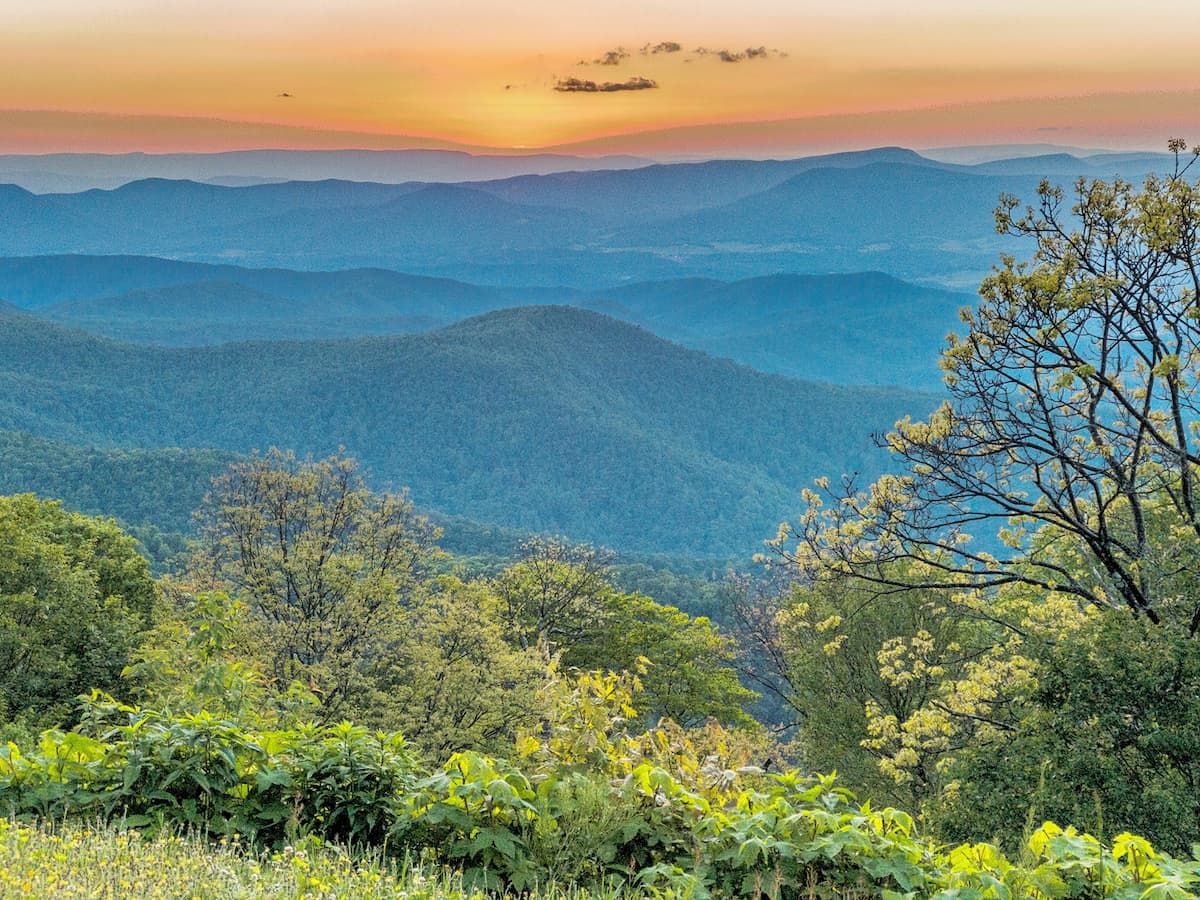
Moreover, they are situated to the east of the Appalachian Plateaus and to the north of the Piedmont-Southeast Coast ranges. Finally, the Appalachian Ridges terminate just south of the Catskill Mountains.
There are many outdoor recreation areas within the Appalachian Ridges and a few notable subranges. Here are some of the major geographical areas within the Appalachian Ridges, broken up by state.
Alabama represents the southernmost extent of the Appalachian Ridges. The range terminates just east of I-65, to the north of Montgomery and to the south of Birmingham. There are a handful of protected areas within the Alabamian Appalachian ridges, including Talladega National Forest, Cheaha State Park, and the Dugger Mountain Wilderness.
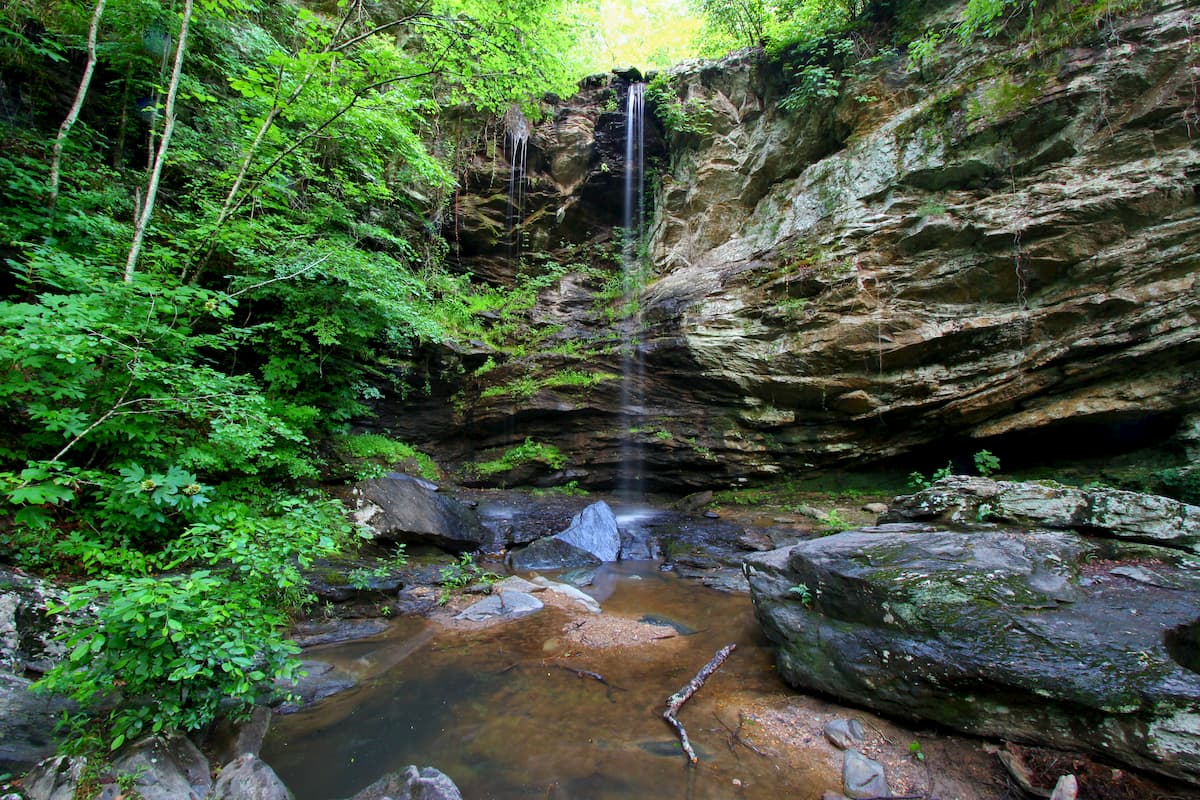
The Appalachian Ridges cross just a small section of the northwestern state of Georgia. This section of the range is bounded to the north by the Appalachian Plateaus and to the south by the Blue Ridge Mountains, which is home to the the start of the Appalachian Trail - Springer Mountain.
Within the Georgian section of the Appalachian Ridges, there are 2 primary recreation areas, the Chattahoochee-Oconee National Forest and the Cohutta Wilderness.
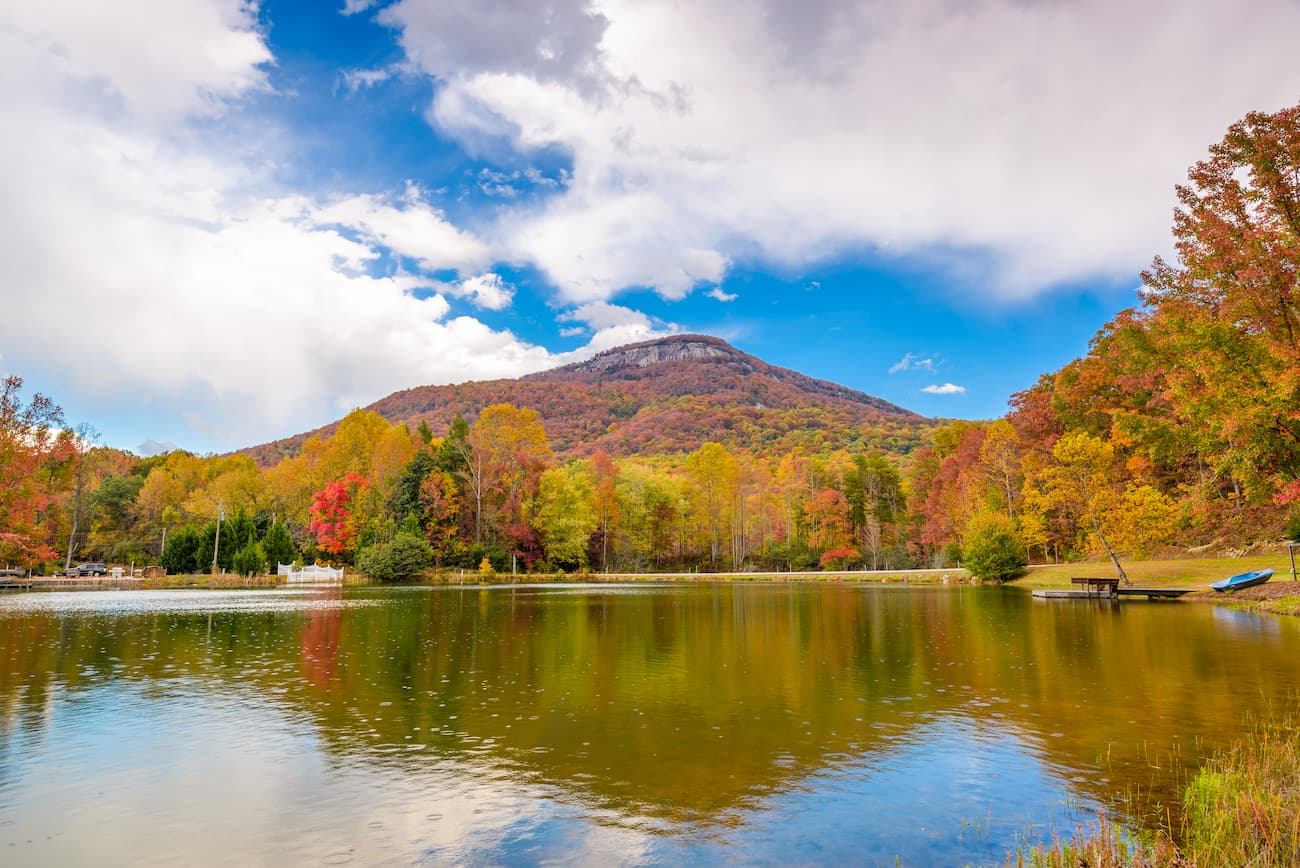
Although eastern Tennessee is highly mountainous, the Appalachian Ridges section of the state is fairly low-lying. In particular, it is situated along the banks of the Tennessee River to the west of the Blue Ridge Mountains within Cherokee National Forest, the Nantahala National Forest, and Great Smoky Mountains National Park.
In Tennessee, there are few major areas of protected land within the Appalachian Ridges. Indeed, the Tennessee River Valley is home to some of the region's largest population centers, such as Chattanooga, Knoxville, and Jefferson City. However, there are a handful of smaller local parks to check out.
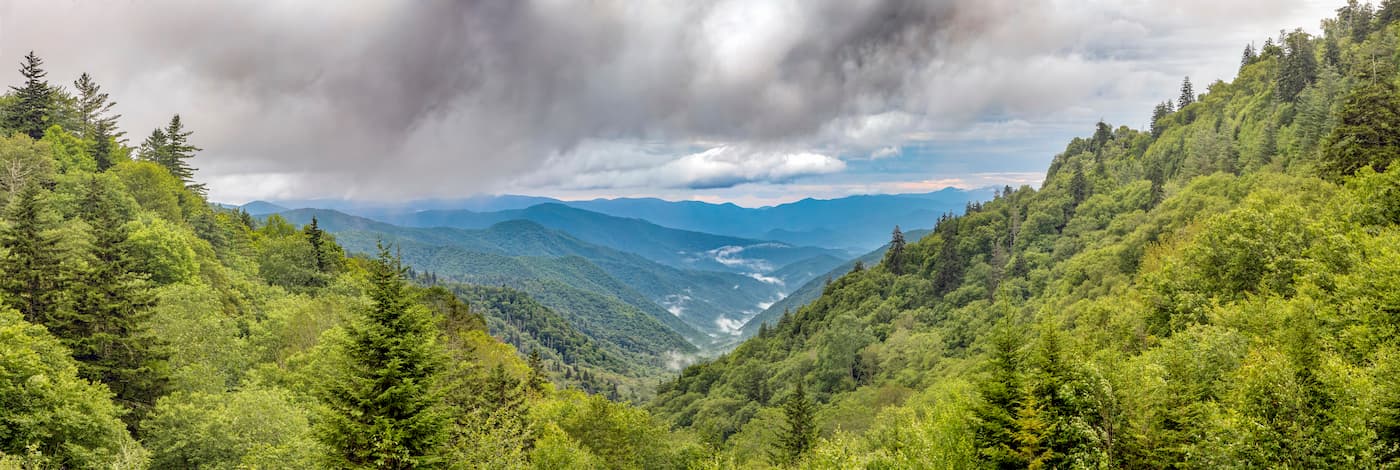
The Appalachian Ridges form the western spine of the Commonwealth of Virginia. Within the state, the range runs from the border with Tennessee, all the way through to the northern section of the border with West Virginia.
While the ridges in the state are bounded on the east by the Blue Ridge Mountains (including Shenandoah National Park) and to the west by the Appalachian Plateaus, there are a number of major outdoor recreation areas to check out. These include:
The Channels State Forest
Crystal Springs Recreation Area
Hungry Mother State Park
Mountain Lake Conservancy
Rough Mountain Wilderness
Douthat State Park
Shenandoah Wildlife Management Area
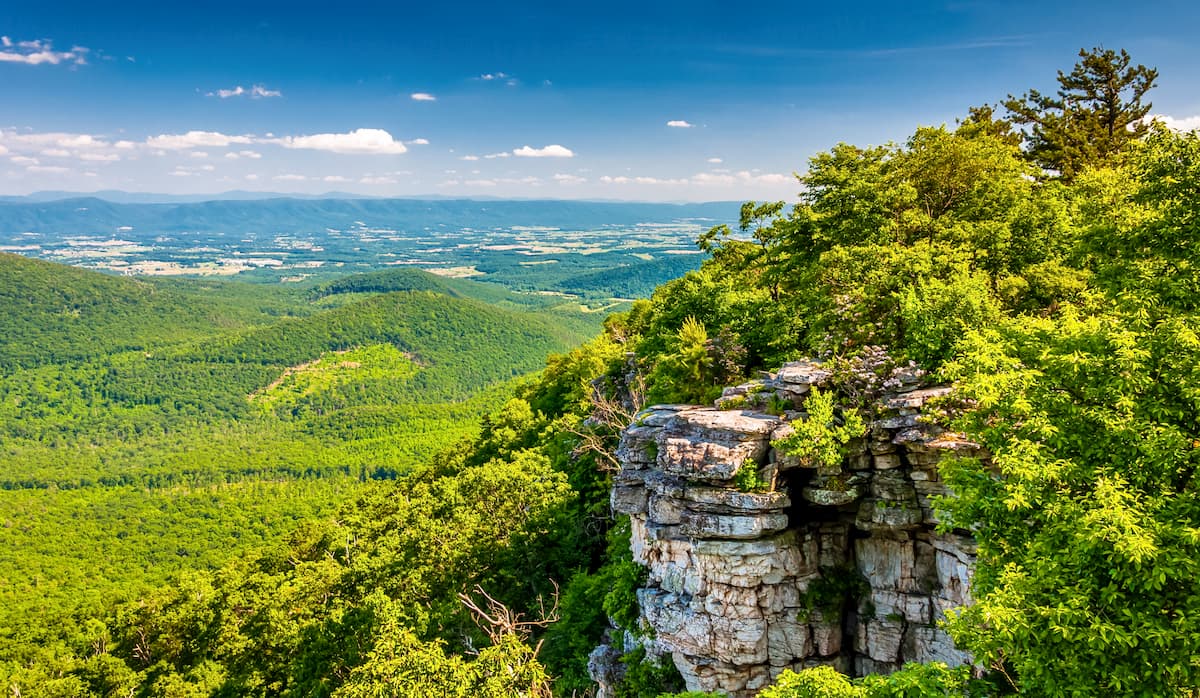
Within West Virginia, the Appalachian Ridges are primarily found within the Potomac Highlands and Eastern Panhandle regions. This area includes a section of the northern Monongahela National Forest and a vast array of different wildlife management areas.
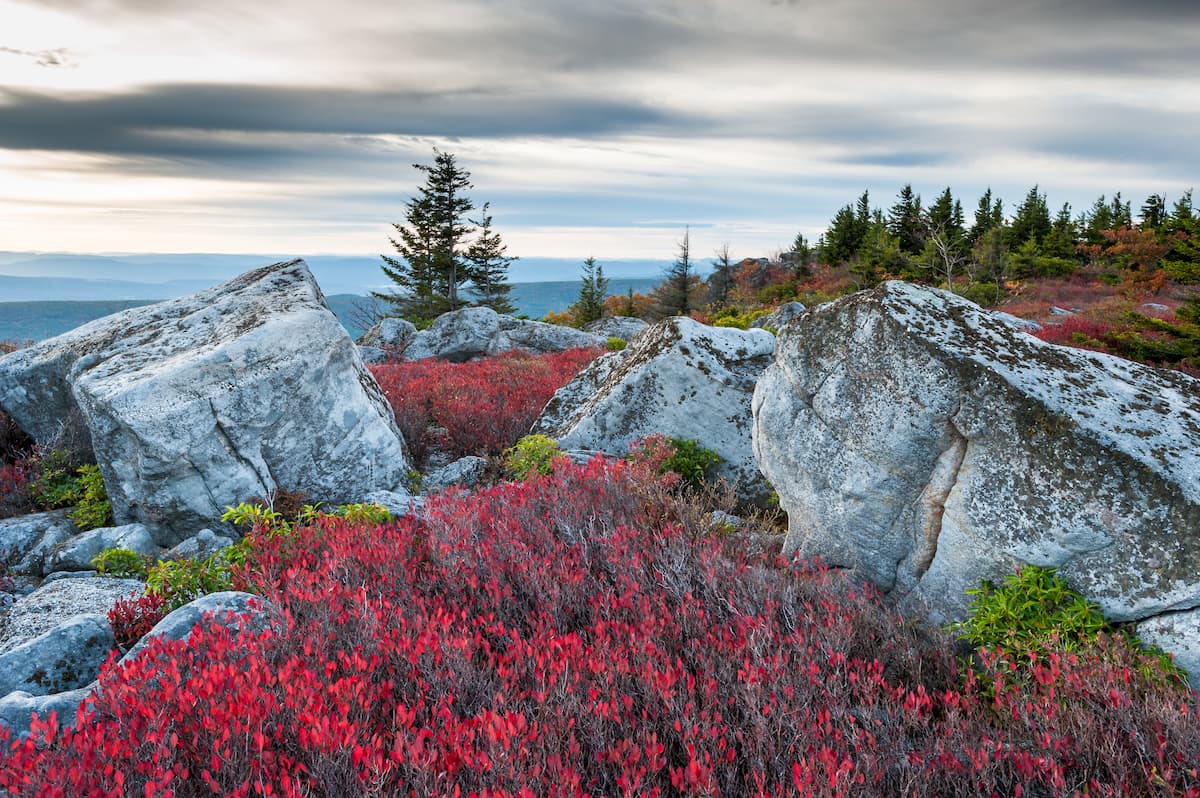
The Appalachian Ridges travel through a very tiny section of the western region of Maryland. They traverse a small section of the state's western panhandle, between the cities of Cumberland and Hagerstown before entering Pennsylvania.
Despite covering a small area, however, there is one notable protected park within this region of Maryland: Green Ridge State Forest.
Forming an arcing chain of hills and highpoints, the Pennsylvanian section of the Appalachian Ridges starts near the south central border with Maryland, travels northward until I-80 and then arcs eastward toward Wilkes-Barre before entering New Jersey.
This section is hilly, more than mountainous, though it is home to a patchwork of various forests, parks, and game lands. These include:
Nescopeck State Park
Hickory Run State Park
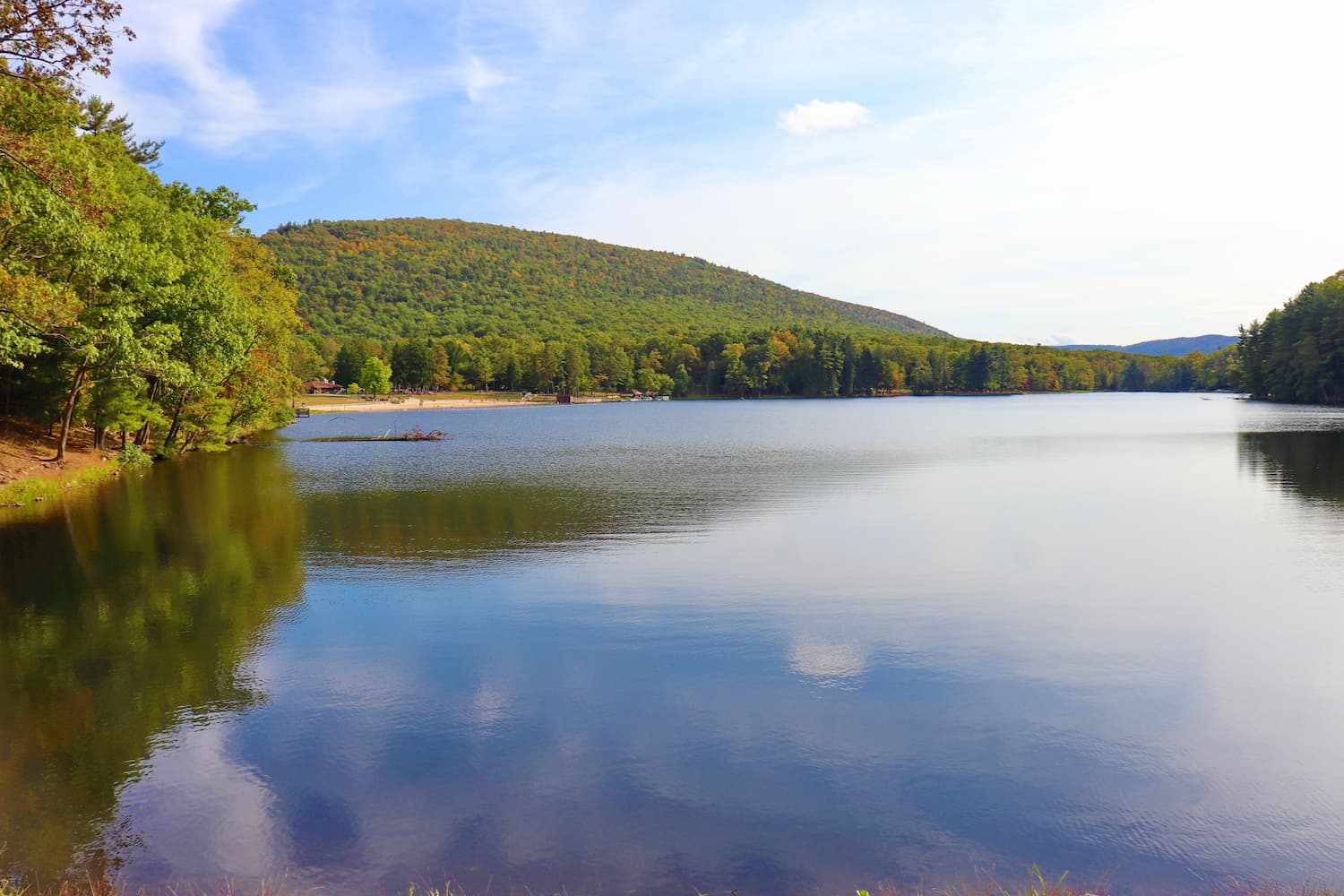
Covering just a small sliver of northwestern New Jersey, the Appalachian Ridges comprise what is arguably the most mountainous part of the Garden State. Within New Jersey, the range is also known as the Kittatinny Mountains.
It traverses through some popular outdoor recreation destinations, such as:
Worthington State Forest
Stokes State Forest
High Point State Park
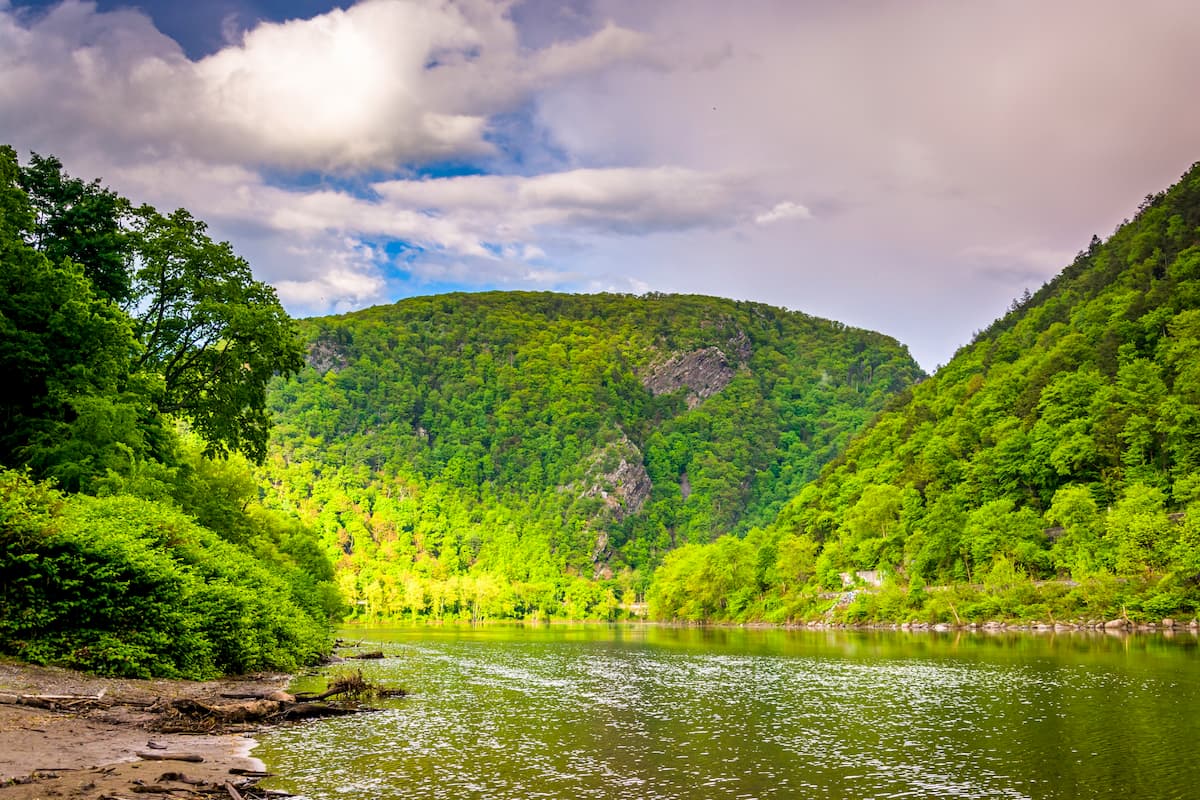
Finally, the Appalachian Ridges terminate in southern New York at the end of their northward journey. Here, they stop just south of the Catskill Mountains and the Taconic Mountains.
Perhaps the most famous part of the New York section of the range is the Minnewaska State Park Preserve, the Mohonk Mountain House Property, and the Mohonk Preserve, all of which are home to an extensive cliff system known as the Shawangunk Ridge.
The Shawangunk Ridge, or, “The Gunks,” as it’s more commonly known, is a world-famous rock climbing destination. It’s also a popular hiking and biking area that’s just 90 minutes north of New York City.
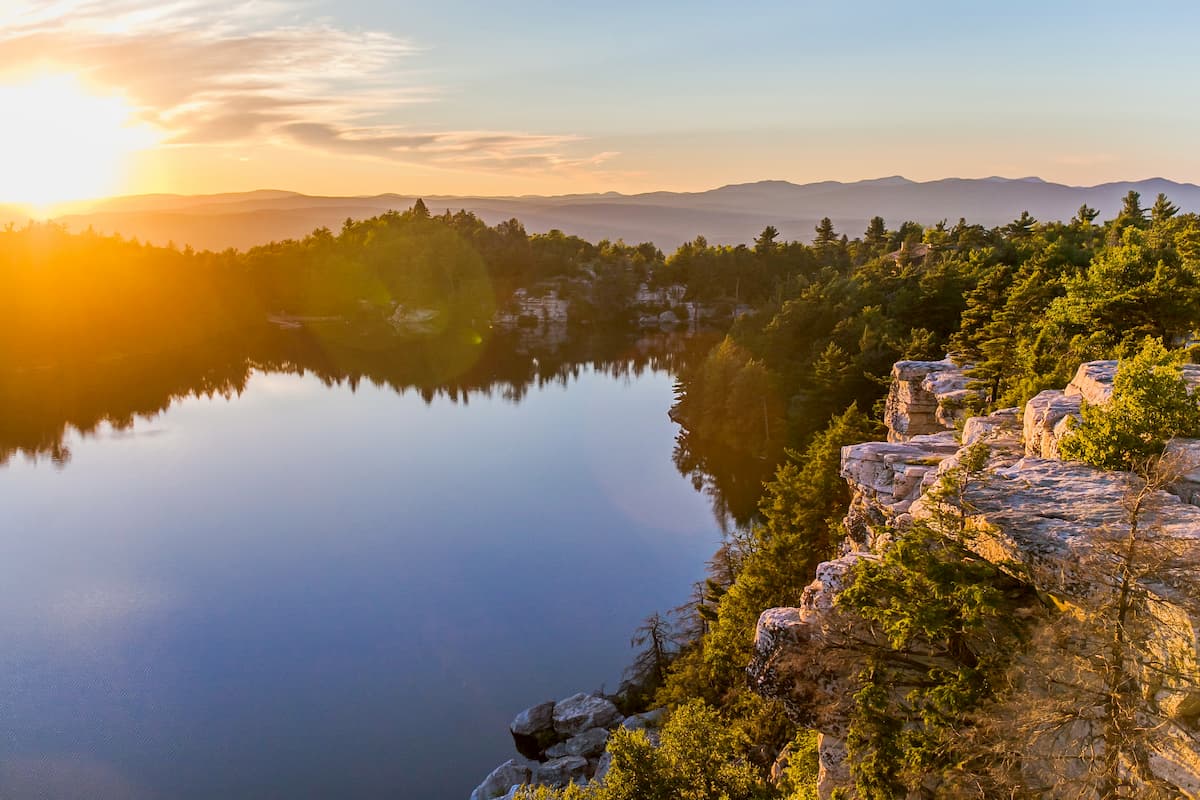
Geologically, the Appalachian Ridges are part of what's known as the Valley and Ridge Province. This province is essentially a series of northeast and southwest anticlines and synclines that cover a long section of the eastern United States.
The majority of the bedrock in the region is sedimentary and includes limestones, shales, and conglomerates. These rocks, for the most part, date back to the Early Paleozoic, however, the folding and series of ridges that characterizes the region are the result of widespread compression that occurred during the formation of Pangea.
Moreover, this region is rich in valuable natural resources. These resources include anthracite coal, which has been a major economic driver in the region for many generations. There are also sizable deposits of iron, zinc, and limestone, as well as marble, slate, and salt.
Major peaks in the Appalachian Ridges include Spruce Knob, Garden Mountain, Beartown Mountain, Elleber Knob, and Kile Knob.
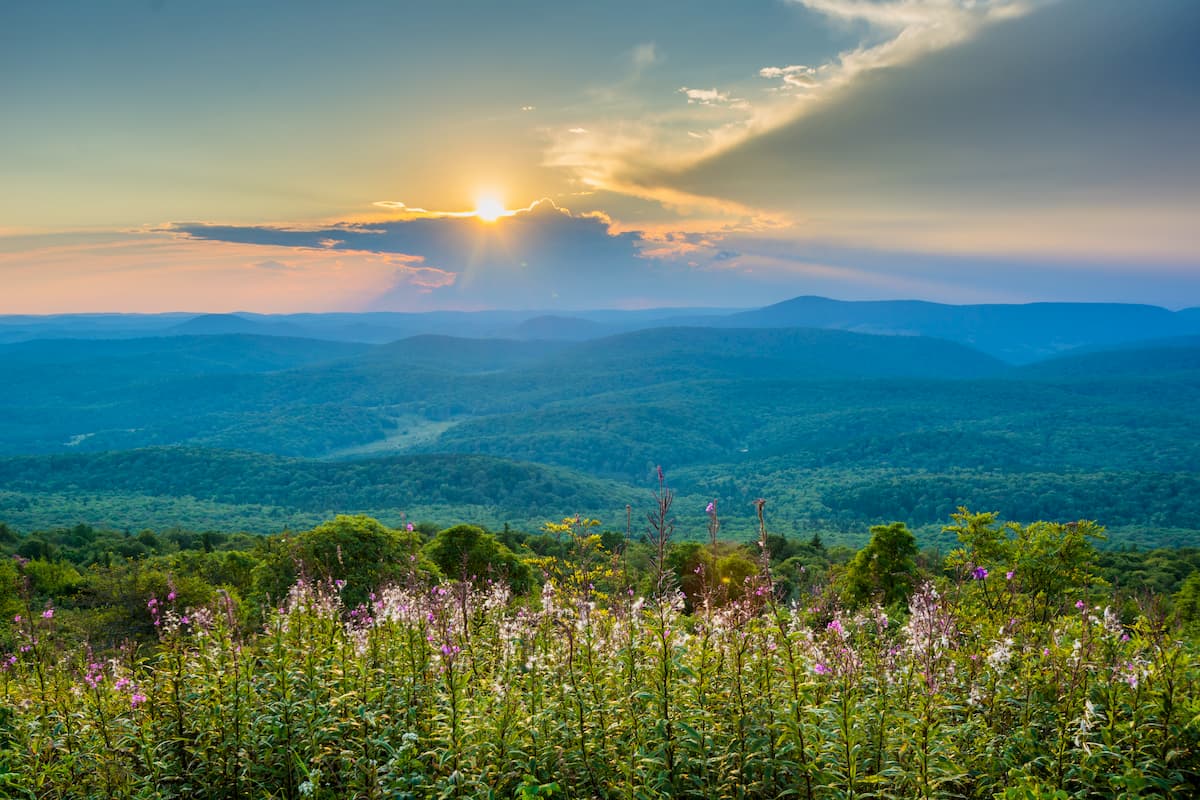
Surprisingly, although the Appalachian Ridges cover a massive swath of land, they are almost wholly contained within one Level III ecoregion, as defined by the EPA: the Ridge and Valley ecoregion.
For the most part, this ecoregion is relatively low lying, particularly with respect to its more lofty neighbor to the east - the Blue Ridge Mountains. That being said, this ecoregion is home to a diverse array of flora and fauna.
In the northern section of the range, the climate is humid continental while in the south it is humid subtropical. This difference in climatic conditions also affects the foliage in the area as the southern part of the range is substantially warmer in the winter months.
Long before the arrival of European settlers, the Appalachian Ridges were dominated by a typical Appalachian Oak Forest, particularly in the north, and an oak-hickory-pine forest in the south.

However, widespread clear cutting in the area and the rise of agriculture has turned this part of the Appalachians into one of the most heavily farmed parts of the range. In particular, dairy, beef, corn, tobacco, soy, and cotton are all important products in this section of the Appalachians.
The region in and around the Appalachian Ridges, like the rest of the Appalachian Mountains has been inhabited by humans for thousands of years. Over the millenia, countless groups have called this region home, including the Cherokee, Shawnee, Moneton, Tutelo, Monacan, Manahoac, Massawomeck, Susquehannock, Lenape, and Mohican, among many others.
When non-Indigenous peoples, particularly Europeans, first arrived in the eastern United States, they mainly settled around the coast. Indeed, the Appalachian Mountains and their many ridges were a major barrier to westward European movement.
However, the region in and around the Appalachian Ridges, particularly the area just to the east of the range, which is known as the Great Appalachian Valley, became a prime area for the establishment of farms, villages, and cities in the years before westward European settlement. This settlement was partially because of the difficulty of crossing the Appalachians and partially because of the flat, fertile land and the abundance of natural resources found in this region.
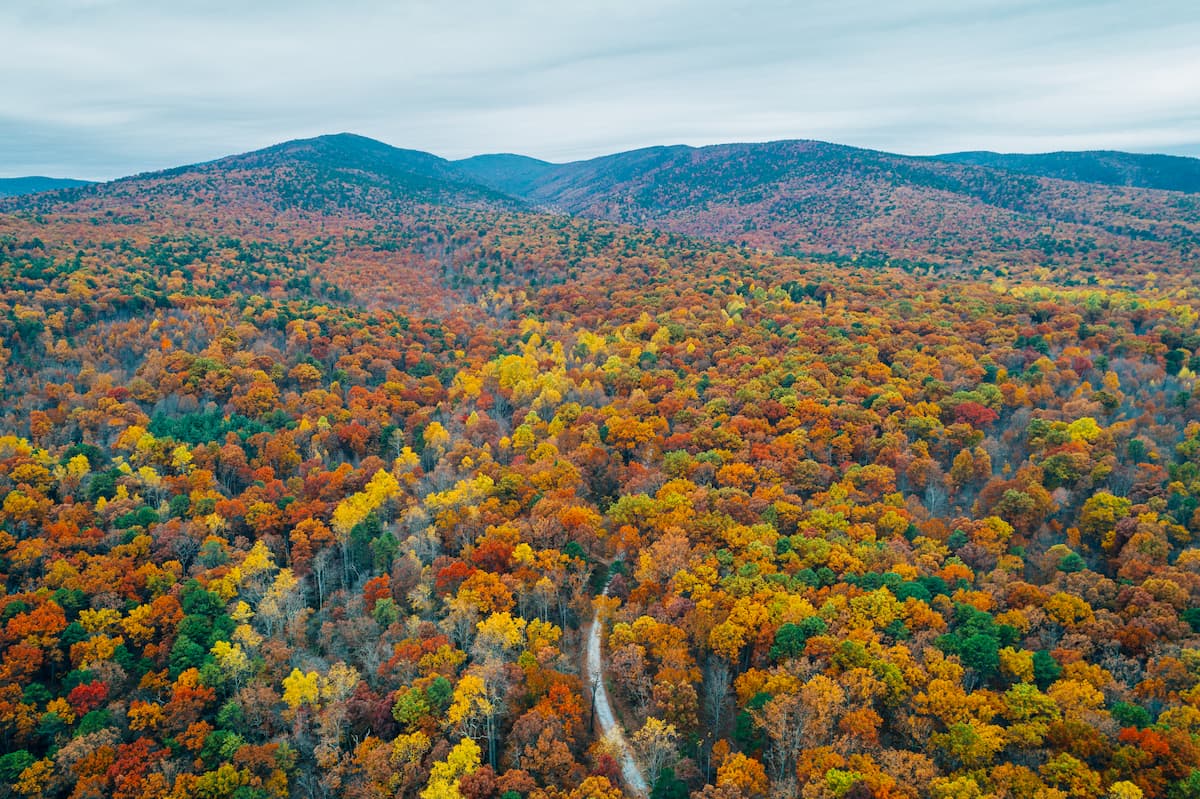
To this day, the region in and around the Appalachian Ridges is home to quite a few sizable cities, as well as some substantial agricultural area. Parts of the range were, and continue to be heavily influenced by mining, particularly of coal, and by logging.
Moreover, the Appalachian Ridges fall within the general boundaries of the cultural region known as Appalachia. Appalachia is home to a rich and unique culture of folklore, music, and literature that continues to this day.
The Appalachian Ridges are home to some fairly large outdoor recreation and hiking areas. Here are some of the best places to check out if you're visiting the region.
Talladega National Forest (Talladega Division) is located in the eastern part of the state of Alabama at the southern end of the Appalachian Ridges. It contains 25 named mountains, the highest and most prominent of which is Cheaha Mountain.
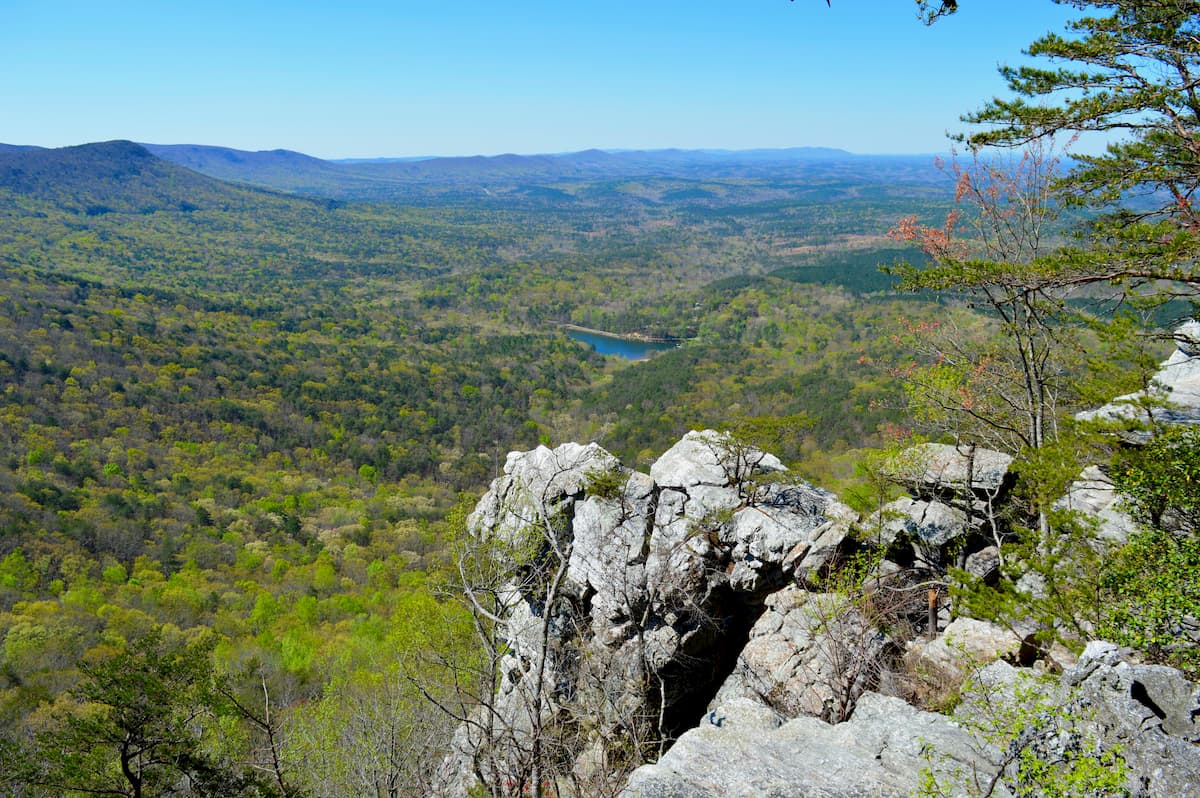
The forest was extensively logged before being placed under federal purvey, though it now has a fairly diverse ecosystem. It also contains the Cheaha and the Dugger Mountain Wildernesses, which are both excellent hiking areas.
Throughout Talladega, visitors have good opportunities to view the local wildlife, which can include white-tailed deer, fox, quail, wild turkeys, black bears, and coyotes. There are also some interesting threatened species in the forest, including the red-cockaded woodpecker, the flattened musk turtle, and the gopher tortoise.
Situated within the northwestern corner of the state of Georgia, the Chattahoochee-Oconee National Forest (Conasauga District) is a federally managed area of land that's known for its abundance of wildlife. The forest contains 45 named mountains, the highest and most prominent of which is Cowpen Mountain.
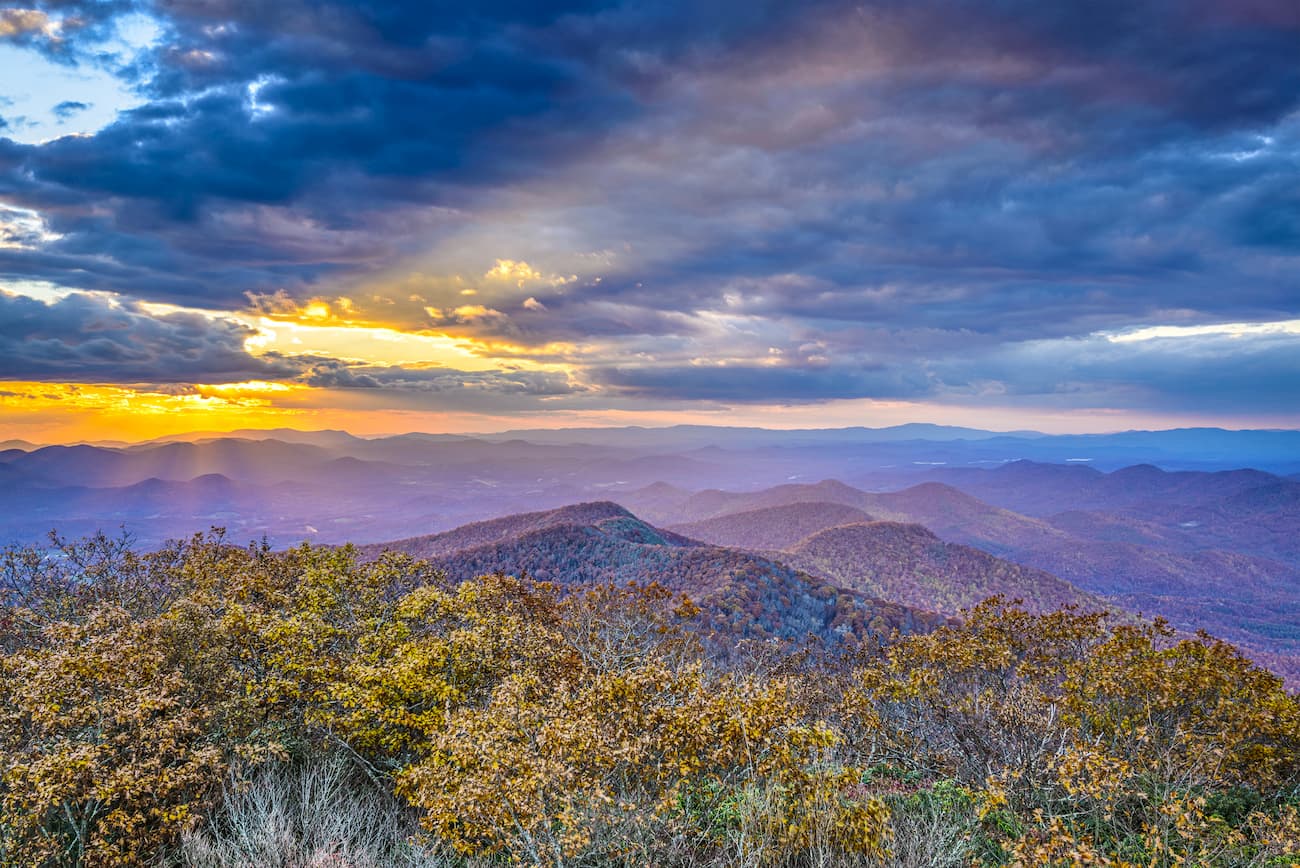
Within the forest, visitors can check out the Chattooga River, which is a federally-designated Wild and Scenic River that's famous for its white water rafting and stunning landscapes. There is also a great network of trails and hiking opportunities for all to enjoy.
Jefferson National Forest and George Washington National Forest both contain sections of the Appalachian Ridges. The two forests are administratively combined and they are located along the border of West Virginia and Virginia.
Jefferson National Forest is home to 320 named peaks, the highest of which is Mount Rogers, and the most prominent of which is Apple Orchard Mountain. Meanwhile, George Washington National Forest is home to 326 named mountains, the highest of which is Paddy Knob and the most prominent of which is Elliot Knob.
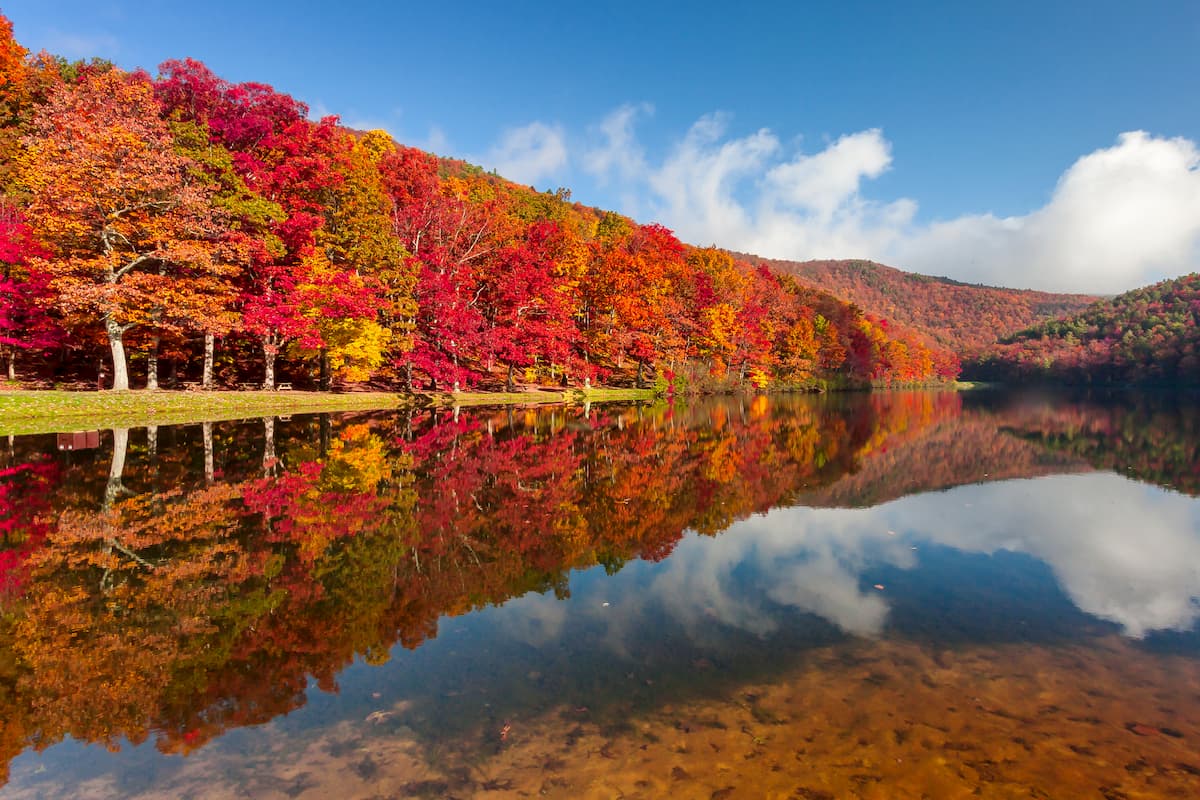
Both forests are known for their stunning natural beauty and dense woodlands. There are thousands of miles of hiking trails between the two forests, including sections of the Appalachian Trail, for visitors to check out.
Monongahela National Forest is situated in the eastern part of West Virginia. A small section of the Appalachian Ridges is located in the easternmost part of the forest, though there are 191 total mountains in Monongahela, the highest and most prominent of which is Thorny Benchmark.
Monongahela is home to some particularly large sections of forest, though most is second growth as it was heavily logged in years past. There are actually 8 wilderness areas within the forest though none within the Appalachian Ridges.
The forest is quite rugged, but there are hundreds of miles of trails for hikers to check out. In fact, Monongahela is a major outdoor recreation destination in the region, with dozens of campgrounds and plenty of activities for visitors to enjoy.
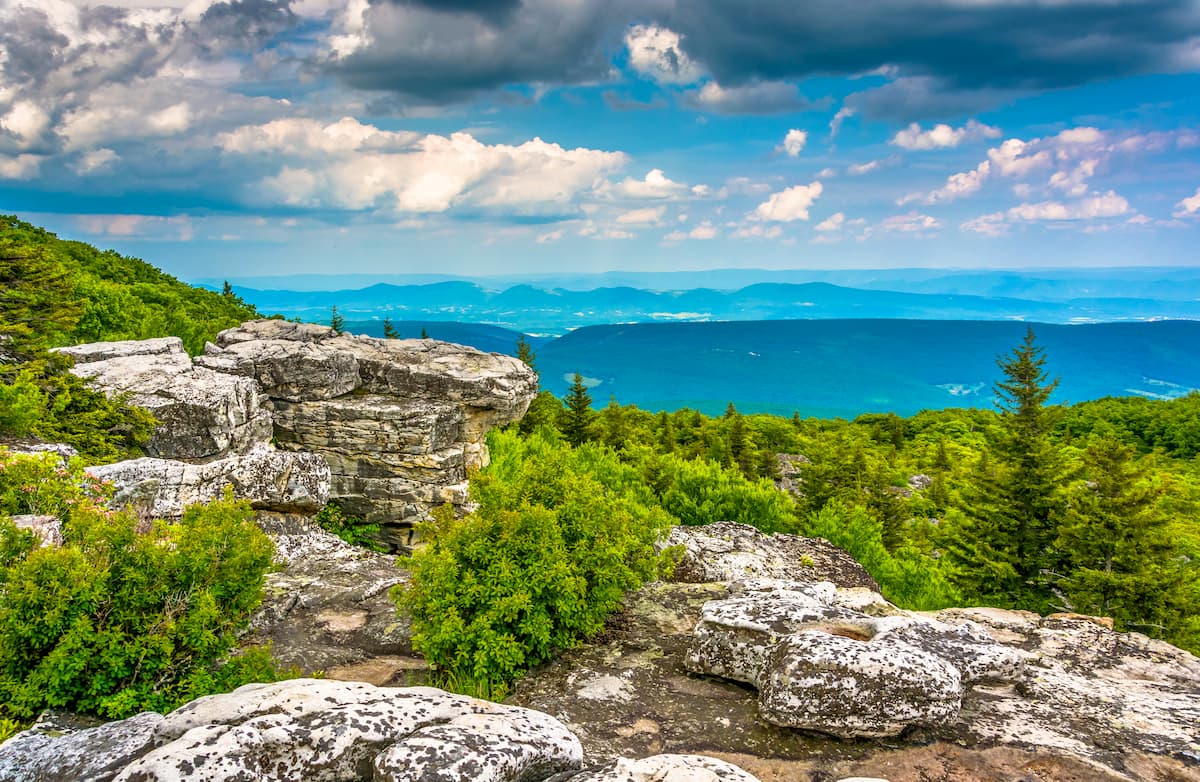
Delaware Water Gap National Recreation Area is located along the northwestern edge of New Jersey. The recreation area contains 8 named mountains, the highest and most prominent of which is Raccoon Ridge.
Situated on the banks of the Delaware River, the recreation area is a major natural attraction for the region. Hiking, climbing, and general outdoor activity are all very popular within the park, as are fishing and hunting during the appropriate seasons. Moreover, the Appalachian Trail traverses the eastern edge of the park.
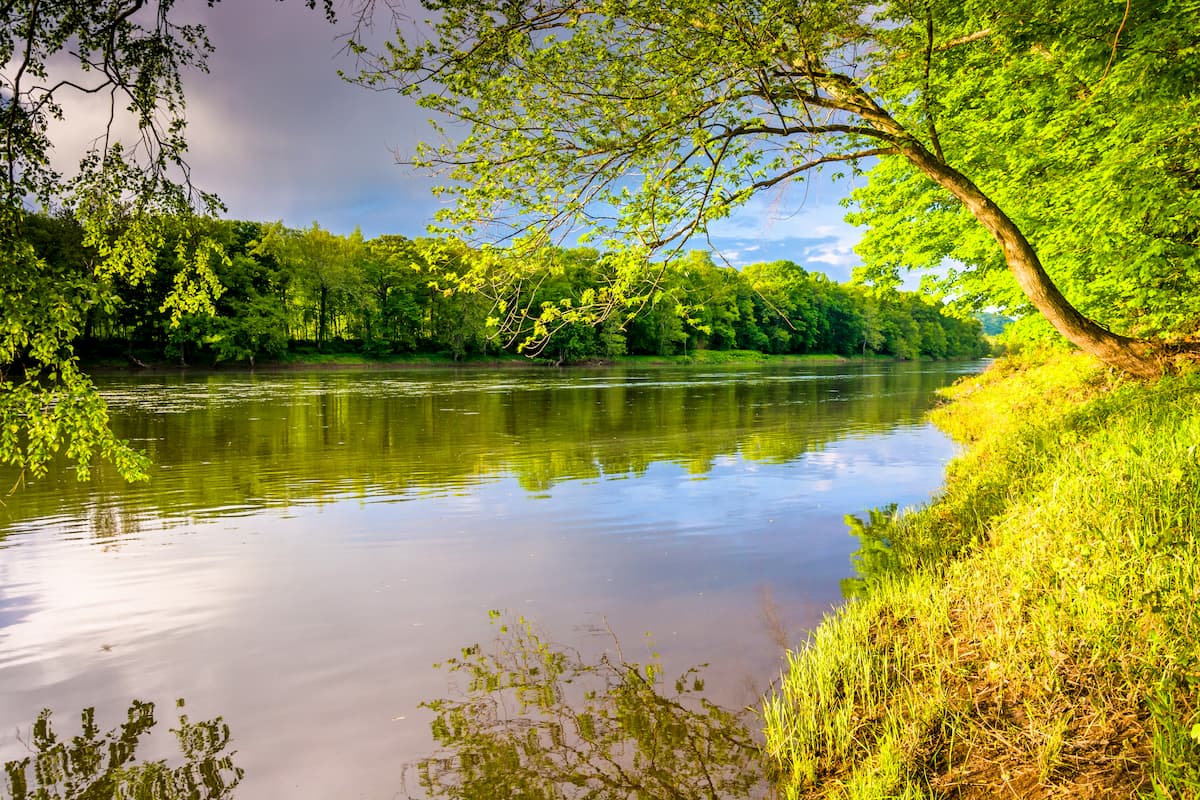
Home to the northernmost extent of the Appalachian Ridges, the “Gunks,” or the Shawangunk Ridge, is an extremely popular outdoor recreation destination. There are a number of protected areas along the ridge and in the surrounding region, including Minnewaska State Park and the Mohonk Preserve.
In particular, the Mohonk Preserve is a world-class rock climbing destination. With hundreds of climbing routes located within a 90 minute drive of New York City, the Gunks are one of the most popular climbing areas in the northeastern United States. The preserve and the state park also have fantastic hiking opportunities for all to enjoy.
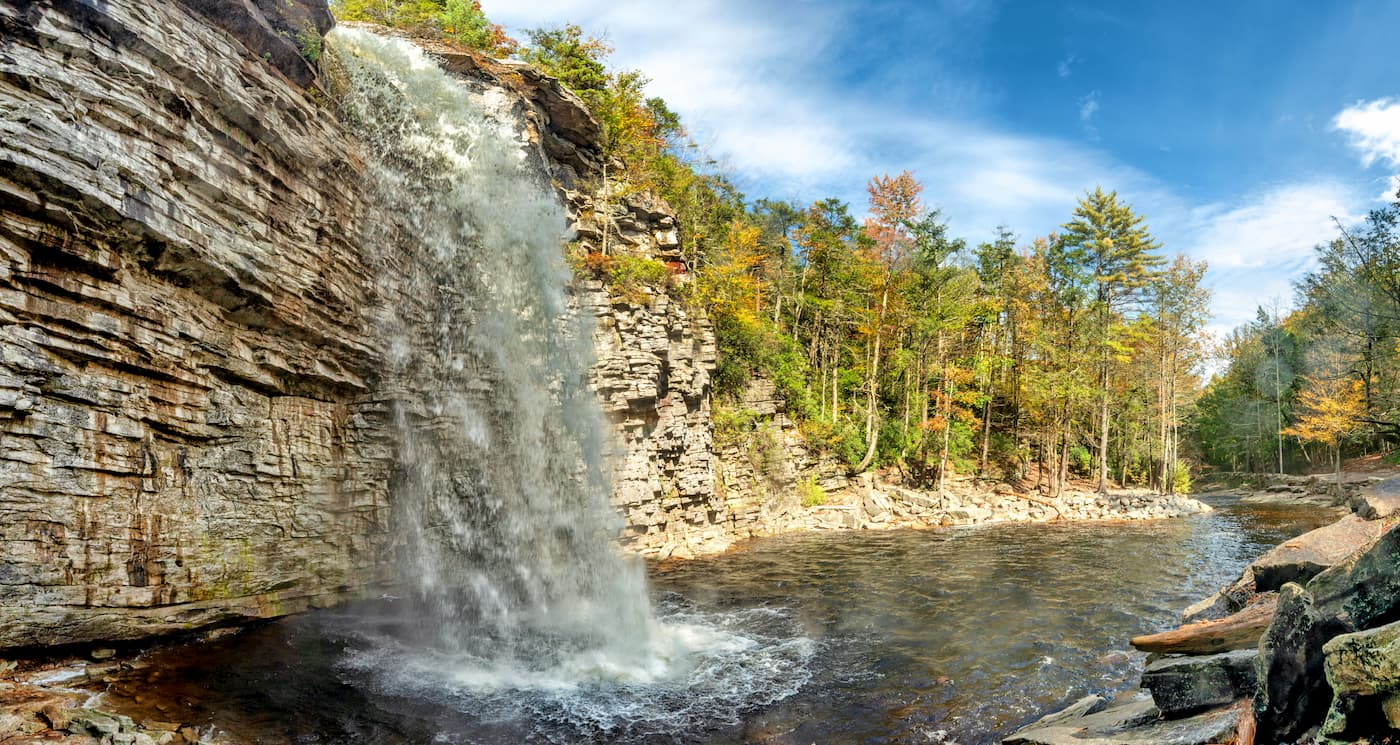
The Appalachian Ridges are situated very close to some of the largest cities on the Eastern Seaboard of the United States. Here are some of the best places to stay during your trip:
New York City is located just west of the northern part of the Appalachian Ridges. It is the largest and most densely populated city in the United States with approximately 8.3 million residents.

New York is a cultural, financial, and political center for the region, as well as a major tourist attraction. The city is well connected by road (be ready for the traffic!), and there are 3 major New York area international airports that offer excellent connections around the world.
The largest city in the state of Pennsylvania, with over 1.5 million residents, Philadelphia is a major cultural and commercial hub of the Delaware Valley and the northern Appalachian Ridges area. Philly, as is known locally, is also home to some of the most popular historical landmarks in the region.
The city is located near a number of major highways, including I-95. It is connected by train and bus to the rest of the Eastern Seaboard's major cities and it has an international airport.

Nestled in the southern part of the Appalachian Ridges, the city of Knoxville, Tennessee is home to approximately 187,000 residents, which makes it the largest metropolitan area in the eastern part of the state.
Knoxville is home to the main campus of the University of Tennessee. It's also considered a gateway to the nearby Great Smoky Mountains National Park and to the southern part of the Appalachians. The city is accessible via I-75 and I-40, as well as by a domestic airport.
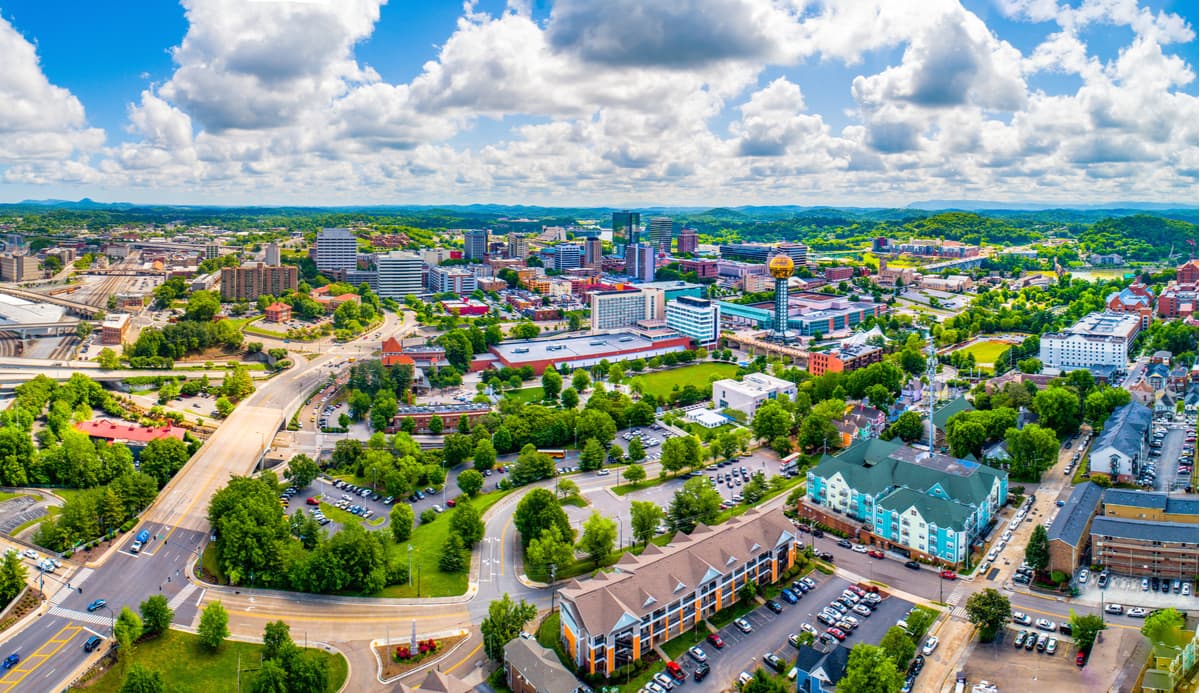
Atlanta is the capital and largest city in the state of Georgia with some 500,000 residents. It is located near the southernmost extent of the Appalachian Ridges and has a large metropolitan area with more than 6 million residents.
The city has a major international airport, which is a hub for Delta airlines. It also happens to be the world's busiest airport, measured by passenger traffic, a distinction it's held since the late 1990s.

Explore Appalachian Ridges with the PeakVisor 3D Map and identify its summits.








